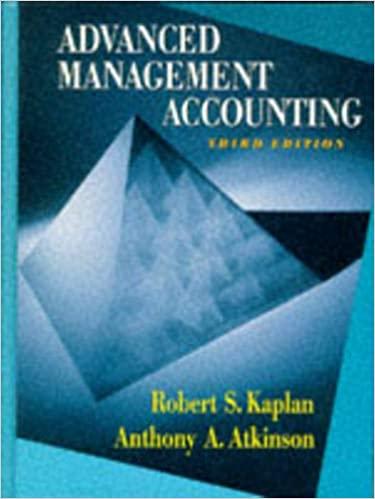Question B3 Part ! Ripple Corporation produces and sells two products: A70 and A80. Data concerning the expected production of each product and the expected total direct labor-hours (DLHS) required to produce that output appear as follows: Expected Direct labor- Total direct labor- production hours per unit hours 500 4.000 950 4.750 A70 1 A80 Total direct labor hours 8.750 The direct labor rate is $10 per DLH. The direct materials cost per unit is $400 for A70 and $320 for A80. The company has an activity-based costing system with the following activity cost pools, activity measures, and expected activity: Estimated Expected Activity Activity Cost Pools Activity Measures Overhead Cost A70 A80 Labor-related Machine settings General factory DLHS Settings MHs $98.000 4.000 4.750 8.750 2.015 380 520 900 56,000 4.200 3,800 8,000 Required: (a) By using a vertical table format to compute all the activity rates (rounded to 2 decimal places). (3 marks) (b) By using a vertical table format to compute how much overhead cost per unit will be assigned to each product (A70 and A80) (rounded to 2 decimal places). (5 marks) (c) By using a vertical table format to compute the unit product cost of each product (A70 and A80) (rounded to 2 decimal places). (4 marks) Page 8 of 11 Question B3 (continued) Part II Yeeth Corporation is a company which produces robot and its financial data shows that the company is growing with significant increase in both production and sales. The standard and actual costs per unit for the most recent period are given below and 400 units were actually produced Standard Actual Materials: Standard: 24 feet at $1.4 per foot $3.36 Actual: 1.8 feet at $1.7 per foot $3.06 Direct labor Standard: 1.2 hours at $5.9 per hour Actual: 1.6 hours at $6.3 per hour 10.08 Variable manufacturing overhead: Standard: ? hours at $3.4 per hour Actual: 2 hours at $3.0 per hour Total unit cost $14.52 $17.94 It is assumed that all of the material purchased during the period was used in production during the period. The variable manufacturing overhead is based on the direct labor hours. The firm applies variable overhead on the basis of direct labor-hours. The direct materials purchases variance is computed when the materials are purchased. Required: To compute the following variances and indicate whether each variance is favourable (F) or unfavourable (U): (a) the materials price variance. (1 mark) (b) the materials quantity variance. (1 mark) (c) the labor rate variance. (1 mark) (d) the labor efficiency variance. (1 mark) (e) the variable overhead rate variance. (1 mark) the variable overhead efficiency variance (1 mark) Part III (a) From the teaching materials, what are planning budgets (less than 15 words)? (4 marks) (b) What is it called when one overhead rate is used throughout a whole factory (less than 5 words)? (1 mark) Page 9 of 11








